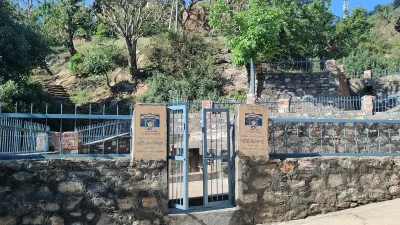A new book details the primitive origins of the GPS tracking technologies that are so pervasive in today’s mobile-phone-enabled world.
Brett Brownell shares news of a new book by Boston Globe technology writer Hiawatha Bray called You Are Here: From the Compass to GPS, the History and Future of How We Find Ourselves.
Brownell calls You Are Here “an entertaining, detailed history of how we evolved from primitive navigation tools to our current state of instant digital mapping—and, of course, governments' subsequent ability to track us.” Here are a few examples:
- “1st century: The Chinese begin writing about mysterious ladles made of lodestone. The ladle handles always point south when used during future-telling rituals. In the following centuries, lodestone's magnetic abilities lead to the development of the first compasses.”
- “2nd century: Ptolemy's Geography is published and sets the standard for maps that use latitude and longitude.”
- “1958: Approximately six months after the Soviets launched Sputnik, Frank McLure, the research director at Johns Hopkins Applied Physics Laboratory, calls physicists William Guier and George Weiffenbach into his office. Guier and Weiffenbach used radio receivers to listen to Sputnik's consistent electronic beeping and calculate the Soviet satellite's location; McLure wants to know if the process could work in reverse, allowing a satellite to location their position on earth. The foundation for GPS tracking is born.”
FULL STORY: The 2,000-Year History of GPS Tracking

Alabama: Trump Terminates Settlements for Black Communities Harmed By Raw Sewage
Trump deemed the landmark civil rights agreement “illegal DEI and environmental justice policy.”

Planetizen Federal Action Tracker
A weekly monitor of how Trump’s orders and actions are impacting planners and planning in America.

The 120 Year Old Tiny Home Villages That Sheltered San Francisco’s Earthquake Refugees
More than a century ago, San Francisco mobilized to house thousands of residents displaced by the 1906 earthquake. Could their strategy offer a model for the present?

In Both Crashes and Crime, Public Transportation is Far Safer than Driving
Contrary to popular assumptions, public transportation has far lower crash and crime rates than automobile travel. For safer communities, improve and encourage transit travel.

Report: Zoning Reforms Should Complement Nashville’s Ambitious Transit Plan
Without reform, restrictive zoning codes will limit the impact of the city’s planned transit expansion and could exclude some of the residents who depend on transit the most.

Judge Orders Release of Frozen IRA, IIJA Funding
The decision is a victory for environmental groups who charged that freezing funds for critical infrastructure and disaster response programs caused “real and irreparable harm” to communities.
Urban Design for Planners 1: Software Tools
This six-course series explores essential urban design concepts using open source software and equips planners with the tools they need to participate fully in the urban design process.
Planning for Universal Design
Learn the tools for implementing Universal Design in planning regulations.
Clanton & Associates, Inc.
Jessamine County Fiscal Court
Institute for Housing and Urban Development Studies (IHS)
City of Grandview
Harvard GSD Executive Education
Toledo-Lucas County Plan Commissions
Salt Lake City
NYU Wagner Graduate School of Public Service





























